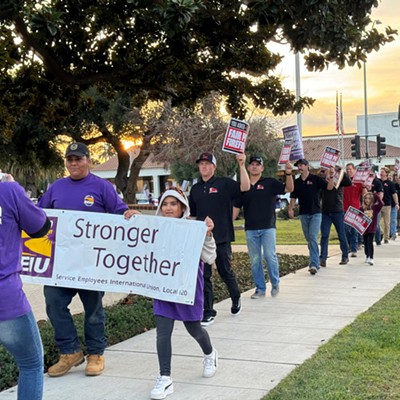With the Lake Cachuma reservoir at less than 50 percent capacity and the county still in a declared state of emergency due to the five-year drought, the Santa Barbara County Board of Supervisors unanimously directed staff to continue exploring alternative water sources on Aug. 22.
The decision came in response to a June 13 grand jury report that found the county lacking in water infrastructure and interagency coordination, and detailed five recommendations for the county water agency to address the issue. At the Aug. 22 meeting, Public Works Deputy Director of Water Resources Tom Fayram recommended that the county respond to the report by implementing two of those recommendations and agreeing with the majority of the findings. Supervisors unanimously agreed to do just that.
One of the recommendations involved the county coordinating with San Luis Obispo County to explore the Diablo Canyon desalination plant as a supplemental water source. Last year, Diablo announced a planned 2025 closure for the nuclear power plant. Fourth District Supervisor Peter Adam expressed skepticism related to the desalination plant’s ability to relieve area water woes.
“From what I recall seeing there, the plumbing just isn’t big enough to get a whole lot [of water] through,” he said during the hearing.
Fayram conceded that the site’s water capacity would need to be expanded in the future.
The other recommendation supervisors agreed to implement was for the water agency to continue cooperating with partners of the county’s integrated regional water management group in searching for funding sources.
According to Fayram, the county’s Office of Emergency Management and water agency met with Sen. Hannah-Beth Jackson, Assemblywoman Monique Limón, and the state Governor’s Office of Emergency Services. He said the parties had been in talks for more than a year in an attempt to create a list of prioritized projects with water purveyors and then submit the list to the state.
“We have been doing that,” he added, “and to date we have not had a response back from the state for potential funding for those projects.”
In its report, the grand jury found that none of the county’s water purveyors had established capital replacement accounts. The jury further found that funding under propositions 50, 84, and 1E had yet to be granted and that there had been minimal regional efforts to develop additional water supply sources, like desalination.
The jury also noted “no single entity has decision or enforcement power within Santa Barbara County to lead regional planning.”










